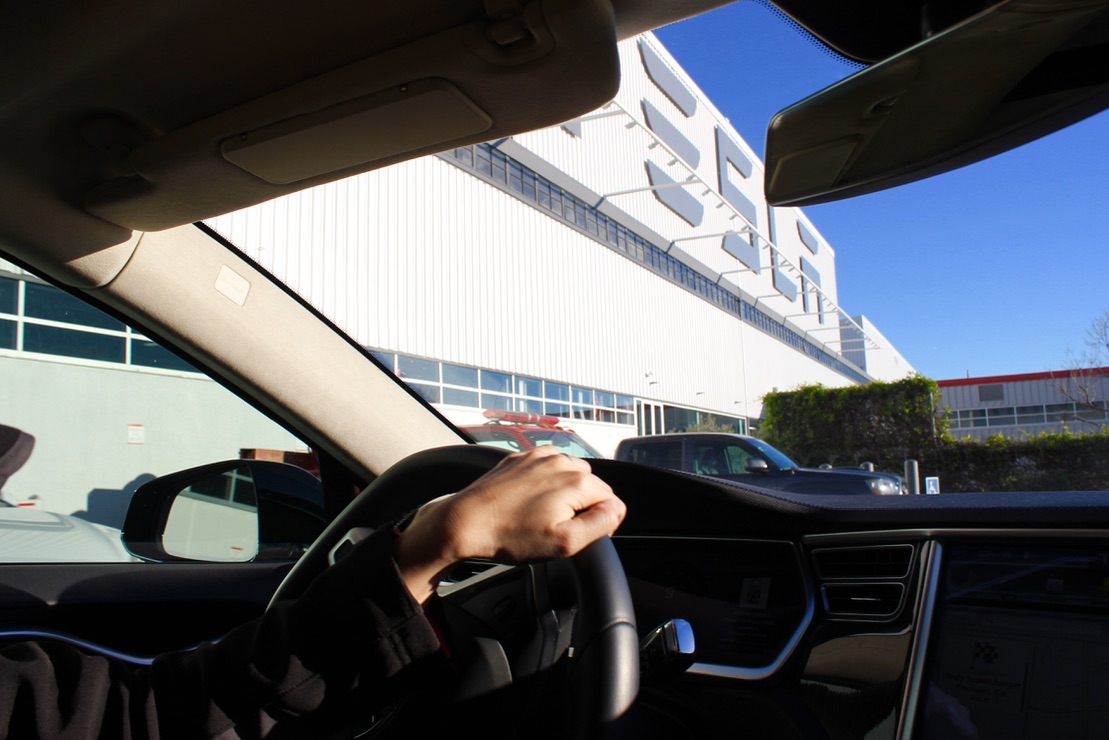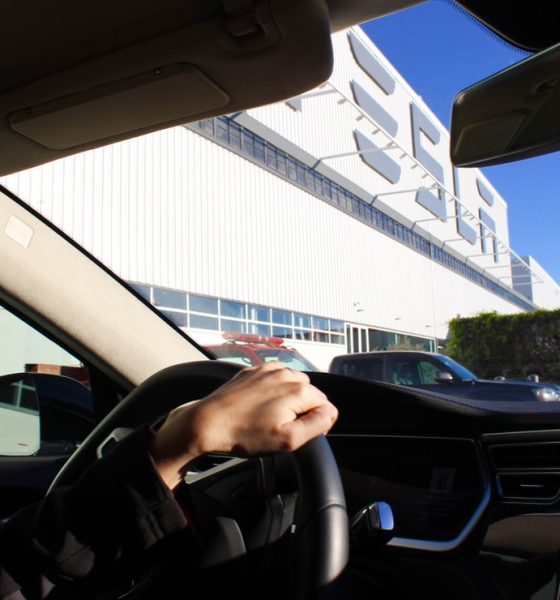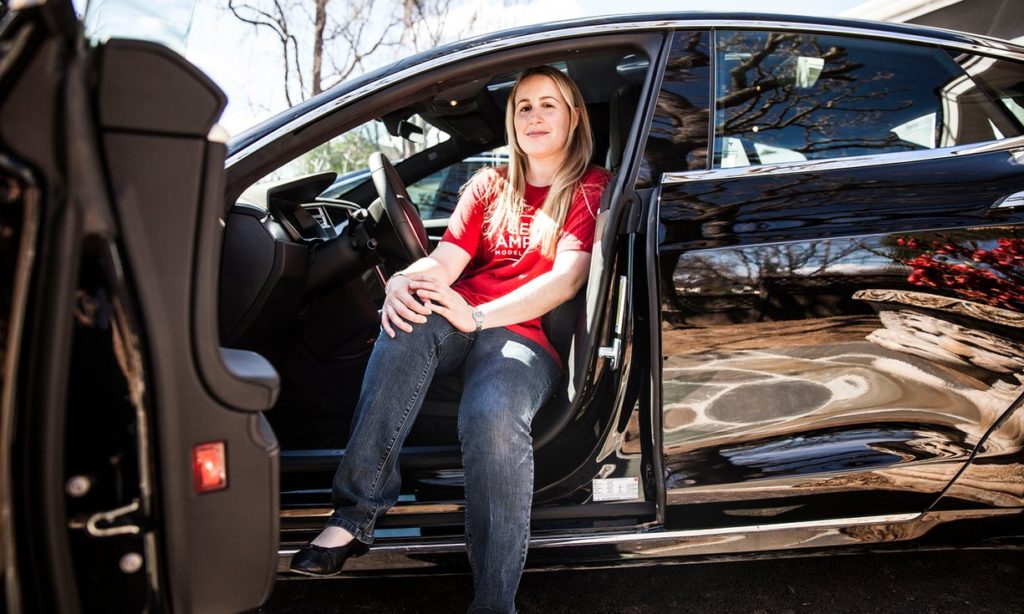

News
Tesla sued by female engineer over allegations of “pervasive harassment”
Tesla has been sued by a female engineer who alleges that a climate of “pervasive harassment” has impeded her career advancement. This lawsuit is one more in a series of recent accusations by females against Silicon Valley technology companies.
Update: Tesla issues an official response to the lawsuit
AJ Vandermeyden, 33, whose career at Tesla began in 2013 and continues today, has come forward at a time when nondisclosure statements prohibit most internal accounting of technology sector working conditions. Among Vandermeyden’s claims are a lower salary than males at comparable job assignments, promotions based on gender rather than qualifications, and a cultural climate where a female who raises concerns becomes the object of internal human resources scrutiny.
Her complaints include male co-workers engaging in sexual harassment that goes unaddressed by human resources. Vandermeyden insists she is dedicated to Tesla, which is part of her motivation for coming forward to advocate for fair treatment and reforms. The engineer owns a Tesla Model S and has a reservation for the upcoming Tesla Model 3. “Until somebody stands up, nothing is going to change,” she said in a recent interview to The Guardian about the discrimination lawsuit she filed last year. “I’m an advocate of Tesla. I really do believe they are doing great things. That said, I can’t turn a blind eye if there’s something fundamentally wrong going on.” She acknowledges that she may face serious risks for making the public aware of her lawsuit against Tesla.

AJ Vandermeyden sits in her Tesla outside her family’s home in San Carlos, California. Photograph: Ramin Talaie for the Guardian
Vandermeyden’s lawyer, Therese Lawless, states that many females in similar positions choose not to speak up. “It’s very difficult for women to come forward. They’re concerned that their career is going to be hindered or jeopardized.”
Vendermeyden moved up through the Tesla ranks to a manufacturing engineering position in the general assembly department, where she was paid less than the male engineers whose position and responsibilities she had assumed. This structure of strong relative percentages wages of males to females is typical throughout the Tesla organization, where its highest paid and most prestigious positions are held by males, with only two out of thirty vice-presidents self-describing as female. In Vandermeyden’s case, it was common for her to be the only female in meetings with forty to fifty males.
She outlined how this male-centric Tesla workplace can be hostile to women and dismissive when discussions around barriers to female workplace equality are raised. The response, she says, is often: “‘We’re focused on making cars. We don’t have time to deal with all this other stuff.’”
The complaint, which was filed in autumn, 2016, alleges that, although Vandermeyden designed a solution to compensate for inadequacies in vehicle quality testing which had been overlooked by supervisors and male engineers, she was not recognized for her problem-solving at the time of performance reviews. Instead, her lawsuit claims that Tesla retaliated against her for being a “whistleblower” when she raised concerns about these cars “sold in a defective state.” The result? Males were granted positions above her, according to the complaint, which her lawyers indicate is a pattern in which she and other female engineers were denied promotions even though they were “equally or more qualified” than the males. The lawsuit outlines how Tesla denied her overtime pay, rest breaks, and meal periods when she worked in sales, as well.
She also experienced “unwelcome and pervasive harassment by men on the factory floor including but not limited to inappropriate language, whistling, and cat calls,” the lawsuit says. Objections about sexual harassment, which she raised in 2015, went unheeded. Instead, Vandermeyden was told that, in order to advance her position, she must achieve what she felt was an unattainable factory performance standard, one that was not expected of male engineers. Despite the positive performance evaluations she received, Vandermeyden concluded that her best opportunities for career advancement and overcoming institutional barriers were to transfer to the purchasing department, her current position at Tesla, Inc.
Tesla is not alone in its alleged imbalanced gender culture. Tensions at Uber emerged last week when former engineer Susan Fowler wrote a blog post in which she chronicled a year of work at Uber. In that narrative, she described a chaotic internal culture, a human resources department that made excuses for sexual harassment, frequent episodes where victims were blamed, and a pattern of promotions based on insider preference rather than data-driven performance. Uber CEO Travis Kalanick this week addressed a group of 100+ Uber female engineers to listen to their concerns. Kalanick offered some concessions during his meeting with the female engineers. “So I empathize with you, but I can never fully understand, and I get that. I want to root out the injustice. I want to get at the people who are making this place a bad place. And you have my commitment to make that happen.”
Vandermeyden says, “It’s shocking in this day and age that this is still a fight we have to have.” Her statement acknowledges that any company with more than 30,000 employees will necessarily have a small number of individuals who make claims against the company. Yet, “that does not mean those claims have merit,” the statement adds. “Equal pay is something that is essentially in the back of your mind every single day. You have all these data points showing how you’ve exceeded some of the predecessors and improved on the system. It wears on you.”
Tesla CEO Elon Musk found himself embroiled in another employment controversy earlier this month in which an employee complained of unfair working conditions and discussed how other workers have approached the UAW about possible unionization. Musk used Twitter to wonder aloud whether that complainant was fact or fake news, a Tesla employee or a UAW shill.
Vandermeyden admits she wonders about her future at Tesla. “Half the time when I walk into work, I wonder if my badge is going to work.”

Elon Musk
Elon Musk and Tesla AI Director share insights after empty driver seat Robotaxi rides
The executives’ unoccupied tests hint at the rapid progress of Tesla’s unsupervised Robotaxi efforts.

Tesla CEO Elon Musk and AI Director Ashok Elluswamy celebrated Christmas Eve by sharing personal experiences with Robotaxi vehicles that had no safety monitor or occupant in the driver’s seat. Musk described the system’s “perfect driving” around Austin, while Elluswamy posted video from the back seat, calling it “an amazing experience.”
The executives’ unoccupied tests hint at the rapid progress of Tesla’s unsupervised Robotaxi efforts.
Elon and Ashok’s firsthand Robotaxi insights
Prior to Musk and the Tesla AI Director’s posts, sightings of unmanned Teslas navigating public roads were widely shared on social media. One such vehicle was spotted in Austin, Texas, which Elon Musk acknowleged by stating that “Testing is underway with no occupants in the car.”
Based on his Christmas Eve post, Musk seemed to have tested an unmanned Tesla himself. “A Tesla with no safety monitor in the car and me sitting in the passenger seat took me all around Austin on Sunday with perfect driving,” Musk wrote in his post.
Elluswamy responded with a 2-minute video showing himself in the rear of an unmanned Tesla. The video featured the vehicle’s empty front seats, as well as its smooth handling through real-world traffic. He captioned his video with the words, “It’s an amazing experience!”
Towards Unsupervised operations
During an xAI Hackathon earlier this month, Elon Musk mentioned that Tesla owed be removing Safety Monitors from its Robotaxis in Austin in just three weeks. “Unsupervised is pretty much solved at this point. So there will be Tesla Robotaxis operating in Austin with no one in them. Not even anyone in the passenger seat in about three weeks,” he said. Musk echoed similar estimates at the 2025 Annual Shareholder Meeting and the Q3 2025 earnings call.
Considering the insights that were posted Musk and Elluswamy, it does appear that Tesla is working hard towards operating its Robotaxis with no safety monitors. This is quite impressive considering that the service was launched just earlier this year.
Elon Musk
Starlink passes 9 million active customers just weeks after hitting 8 million
The milestone highlights the accelerating growth of Starlink, which has now been adding over 20,000 new users per day.

SpaceX’s Starlink satellite internet service has continued its rapid global expansion, surpassing 9 million active customers just weeks after crossing the 8 million mark.
The milestone highlights the accelerating growth of Starlink, which has now been adding over 20,000 new users per day.
9 million customers
In a post on X, SpaceX stated that Starlink now serves over 9 million active users across 155 countries, territories, and markets. The company reached 8 million customers in early November, meaning it added roughly 1 million subscribers in under seven weeks, or about 21,275 new users on average per day.
“Starlink is connecting more than 9M active customers with high-speed internet across 155 countries, territories, and many other markets,” Starlink wrote in a post on its official X account. SpaceX President Gwynne Shotwell also celebrated the milestone on X. “A huge thank you to all of our customers and congrats to the Starlink team for such an incredible product,” she wrote.
That growth rate reflects both rising demand for broadband in underserved regions and Starlink’s expanding satellite constellation, which now includes more than 9,000 low-Earth-orbit satellites designed to deliver high-speed, low-latency internet worldwide.
Starlink’s momentum
Starlink’s momentum has been building up. SpaceX reported 4.6 million Starlink customers in December 2024, followed by 7 million by August 2025, and 8 million customers in November. Independent data also suggests Starlink usage is rising sharply, with Cloudflare reporting that global web traffic from Starlink users more than doubled in 2025, as noted in an Insider report.
Starlink’s momentum is increasingly tied to SpaceX’s broader financial outlook. Elon Musk has said the satellite network is “by far” the company’s largest revenue driver, and reports suggest SpaceX may be positioning itself for an initial public offering as soon as next year, with valuations estimated as high as $1.5 trillion. Musk has also suggested in the past that Starlink could have its own IPO in the future.
News
NVIDIA Director of Robotics: Tesla FSD v14 is the first AI to pass the “Physical Turing Test”
After testing FSD v14, Fan stated that his experience with FSD felt magical at first, but it soon started to feel like a routine.

NVIDIA Director of Robotics Jim Fan has praised Tesla’s Full Self-Driving (Supervised) v14 as the first AI to pass what he described as a “Physical Turing Test.”
After testing FSD v14, Fan stated that his experience with FSD felt magical at first, but it soon started to feel like a routine. And just like smartphones today, removing it now would “actively hurt.”
Jim Fan’s hands-on FSD v14 impressions
Fan, a leading researcher in embodied AI who is currently solving Physical AI at NVIDIA and spearheading the company’s Project GR00T initiative, noted that he actually was late to the Tesla game. He was, however, one of the first to try out FSD v14.
“I was very late to own a Tesla but among the earliest to try out FSD v14. It’s perhaps the first time I experience an AI that passes the Physical Turing Test: after a long day at work, you press a button, lay back, and couldn’t tell if a neural net or a human drove you home,” Fan wrote in a post on X.
Fan added: “Despite knowing exactly how robot learning works, I still find it magical watching the steering wheel turn by itself. First it feels surreal, next it becomes routine. Then, like the smartphone, taking it away actively hurts. This is how humanity gets rewired and glued to god-like technologies.”
The Physical Turing Test
The original Turing Test was conceived by Alan Turing in 1950, and it was aimed at determining if a machine could exhibit behavior that is equivalent to or indistinguishable from a human. By focusing on text-based conversations, the original Turing Test set a high bar for natural language processing and machine learning.
This test has been passed by today’s large language models. However, the capability to converse in a humanlike manner is a completely different challenge from performing real-world problem-solving or physical interactions. Thus, Fan introduced the Physical Turing Test, which challenges AI systems to demonstrate intelligence through physical actions.
Based on Fan’s comments, Tesla has demonstrated these intelligent physical actions with FSD v14. Elon Musk agreed with the NVIDIA executive, stating in a post on X that with FSD v14, “you can sense the sentience maturing.” Musk also praised Tesla AI, calling it the best “real-world AI” today.








